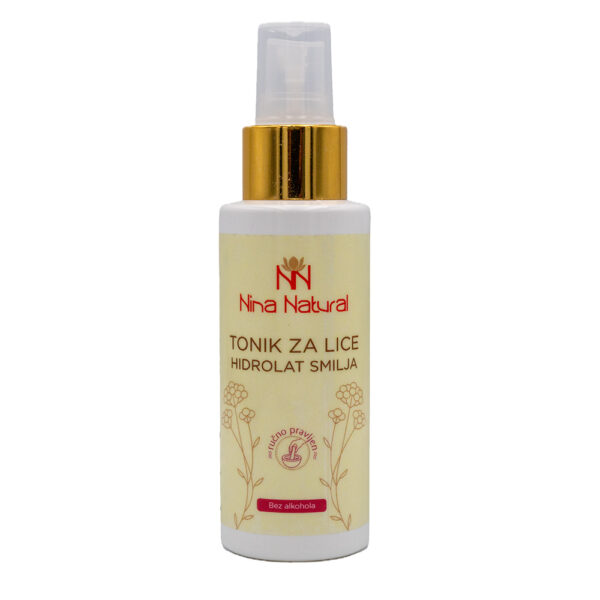How to Recognize Sebaceous Gland Imbalance: A Comprehensive Guide
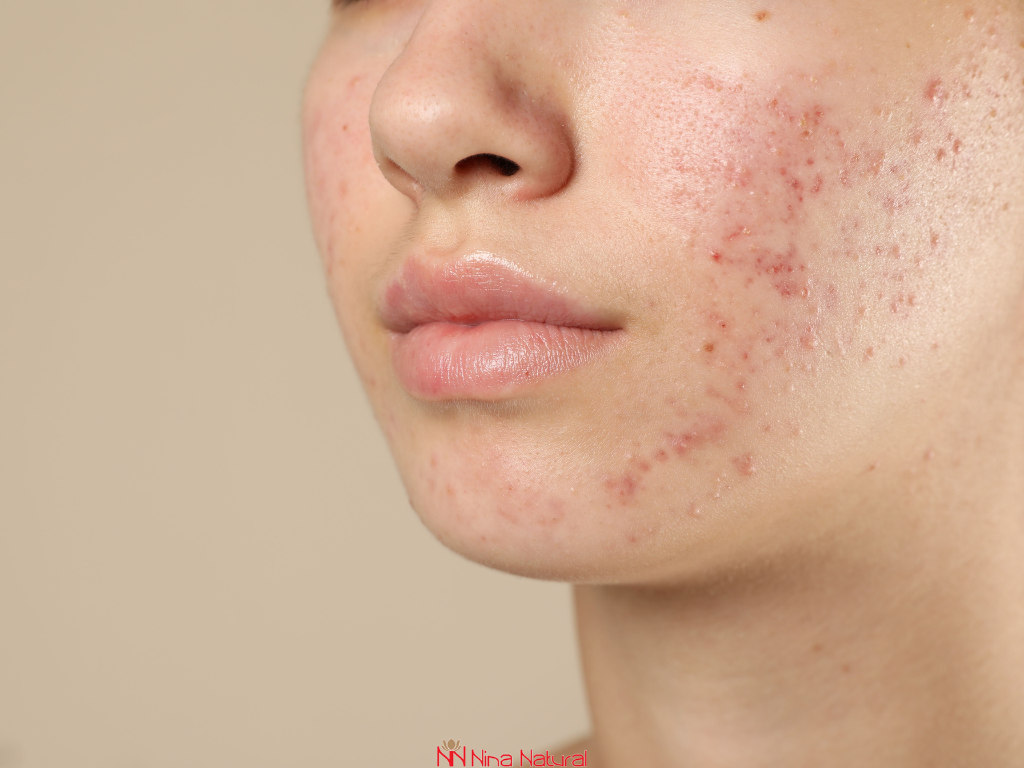
Our skin often shows us first when something in the body is out of balance. Shine that cannot be calmed, persistent pimples, dryness or flaking… These are not just aesthetic changes, but signals that the sebaceous glands are not working as they should. Sebaceous gland imbalance affects a large number of women and can be equally frustrating regardless of whether it manifests as oily or dry skin.
This guide is designed precisely for this: to clarify what it means when sebaceous glands produce too much or too little sebum, how this affects skin and hair, what the most common misconceptions are, and how to recognize the moment when it’s time for professional help. Understanding these processes is the first step to restoring stability to the skin and giving ourselves a sense of security.
What is Sebaceous Gland Imbalance?
Sebaceous gland imbalance means that the sebaceous glands in the skin are not working properly, meaning they produce too much or too little sebum (the skin’s natural oil). When they secrete too much sebum, the skin becomes oily, pores clog more easily and blackheads, pimples or acne form. When they secrete too little sebum, the skin becomes dry, tight, prone to flaking and irritation, because it doesn’t have enough natural protection.
Sebaceous gland imbalance represents a condition that goes beyond aesthetic skin problems, as it can affect the overall balance of the organism. Sebaceous glands are a key part of our body system, and their function includes not only sebum production, but also skin protection, moisture regulation and microbiome preservation, thereby contributing to skin health and internal balance. When their work is not coordinated, various symptoms can appear that we can often misinterpret.
That’s precisely why understanding sebaceous gland imbalance is important. Their work is connected to hormonal and metabolic processes in the organism, so gland imbalance is often caused by deeper internal imbalances. So, if we consider all the roles of sebaceous glands, from their biological functions to their impact on overall health, perhaps we have taken the first step in maintaining balance and preventing complications that can arise if symptoms are neglected.
Symptoms of Increased Sebum Secretion (Hyperseborrhea)
If you’ve been struggling with oily skin for years, you probably know how much this problem can affect self-confidence. A face that constantly shines, pores that look “enlarged” and acne that breaks out at the most inconvenient moments – all of this can be exhausting. Oily skin is not the result of your mistake, nor is it a sign that you don’t take care of yourself. It’s simply the way your sebaceous glands work – they produce more sebum than your skin needs.
Oily Skin in the T-Zone
One of the first signs of hyperseborrhea is a shiny T-zone (forehead, nose, chin). You may have noticed that your face becomes shiny just an hour after washing or that foundation just won’t stay in place. That oily film that forms actually has the role of protecting the skin, but when there’s too much of it, it starts to clog pores. In those pores, an ideal environment for bacteria is created, which leads to small inflammations, pimples and a feeling of heaviness on the face.
Clogged and Enlarged Pores
When pores are constantly filled with sebum, they start to look bigger and bigger. You may feel like your pores are “always open” and that your face never looks smooth. If nothing is done, pores can remain permanently enlarged, even when oiliness decreases. This often creates insecurity and a feeling that no foundation or concealer can hide them.
Frequent Acne and Comedones
When sebaceous glands produce too much sebum, and dead skin cells are not removed in time, pores become clogged. This is how comedones form – blackheads (open comedones) and whiteheads (closed comedones). They are the first stage of acne.
Open comedones (blackheads): look like small black dots, especially on the nose and chin. Although they look like dirt, it’s actually oxidized sebum in the pore.
Closed comedones (whiteheads): hide under a thin layer of skin and feel like small bumps under the fingers.
If bacteria get into the clogged pore, comedones turn into inflammatory forms of acne:
- Papules – red, painful bumps without pus.
- Pustules – similar to papules, but contain pus.
- Nodules and cysts – deeper, painful changes that often leave scars and can significantly affect self-confidence.
Oily Hair and Scalp Problems
When sebaceous glands work at an accelerated pace, the problem doesn’t end on the face. Sebum is also transferred to the scalp, so hair very quickly looks oily, heavy and lifeless. You may wash your hair every day, but notice that it gets oily again by the next morning. Unfortunately, frequent washing only makes the problem worse – aggressive shampoos strip away the natural protection of the scalp, and sebaceous glands respond by working even faster. This creates a vicious cycle that also leads to scalp irritation, itching or the appearance of oily dandruff.
Seborrheic Dermatitis
In some women, excess sebum leads to seborrheic dermatitis. This condition can be particularly unpleasant because it’s accompanied by redness, flaking and itching. On the crown, oily, yellowish dandruff appears that doesn’t go away when we wash hair with “ordinary” shampoos. On the face, these are reddish, oily scales around the nose, in the eyebrows and on the chin. On the body, red areas with scales that itch or burn can appear. Although it seems serious, this condition is very common and can be kept under control with proper care and dermatological advice.
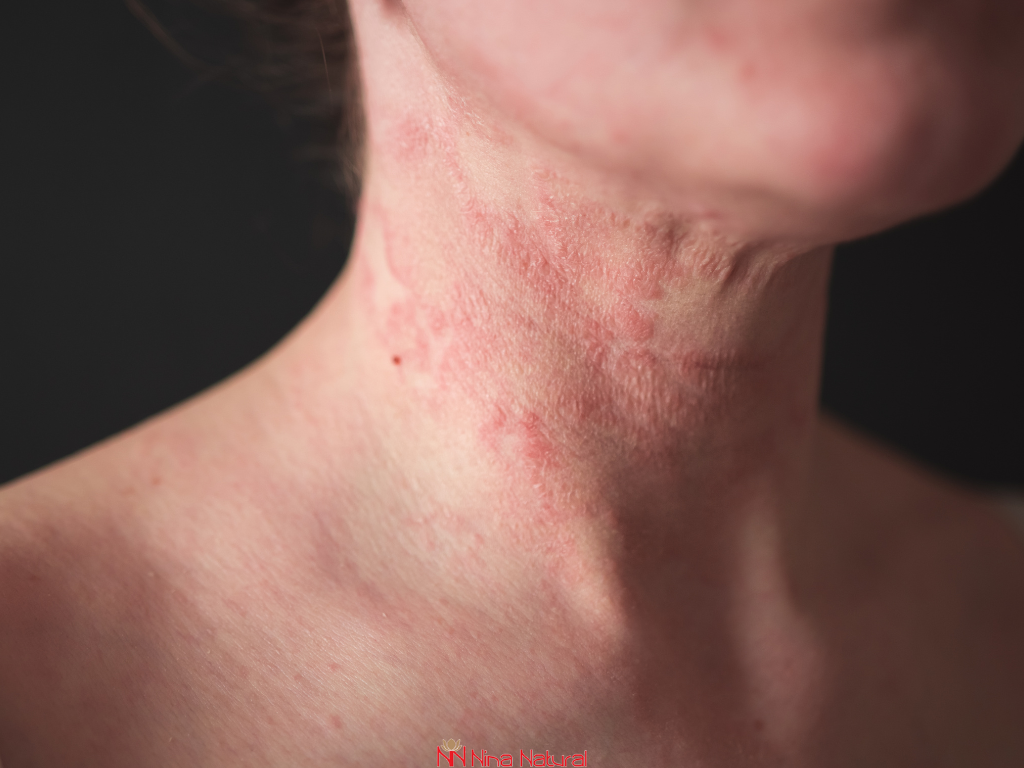
Symptoms of Reduced Sebum Secretion (Hyposeborrhea)
Unlike oily skin, which produces too much sebum, in hyposeborrhea, sebaceous glands work slowly and don’t create enough natural oil. Sebum is a protective layer for skin and hair – it “locks in” moisture, protects from external irritations and provides elasticity. When there isn’t enough of it, skin and hair lose their natural balance and this is clearly visible and felt.
Dry and Tight Skin
You may recognize that feeling of tightness after washing your face – as if your skin cracks when you smile. Lack of sebum means the skin doesn’t have its own barrier that protects it from moisture loss. Because of this, it becomes rough, flakes and can look gray and tired. In dry or cold conditions (winter, air conditioning), symptoms become even more pronounced.
Increased Skin Sensitivity
Skin without adequate protection becomes vulnerable to external factors: sun, wind, cold, even ordinary detergents or more aggressive cosmetic products. Redness, stinging or discomfort often occurs after washing or applying cream. In some women, mild allergic reactions appear, so the face and hands are constantly prone to irritations.
Brittle Hair and Hairs
Sebum doesn’t just protect the skin – it protects hair strands too. When there isn’t enough of it, hair loses shine and moisture, becoming dry, lifeless and brittle. Ends split, and hairs are fragile and difficult to style. This condition can also affect eyelashes or eyebrows, which also look thinner and weaker.
Appearance of Fine Lines
Lack of sebum means the skin cannot retain moisture and elasticity. This makes fine lines and wrinkles more likely to form, especially around the eyes and lips, where the skin is naturally thinner. Because of this, women with dry skin often notice signs of aging earlier than those with oilier skin types.
Itching and Flaking Scalp
When there isn’t enough sebum on the crown, the scalp dries out and starts to flake. Unlike oily dandruff, here the flakes are small, white and dry. Itching can be very unpleasant, and the scalp sometimes becomes red and irritated. All of this additionally weakens the hair and affects its appearance.
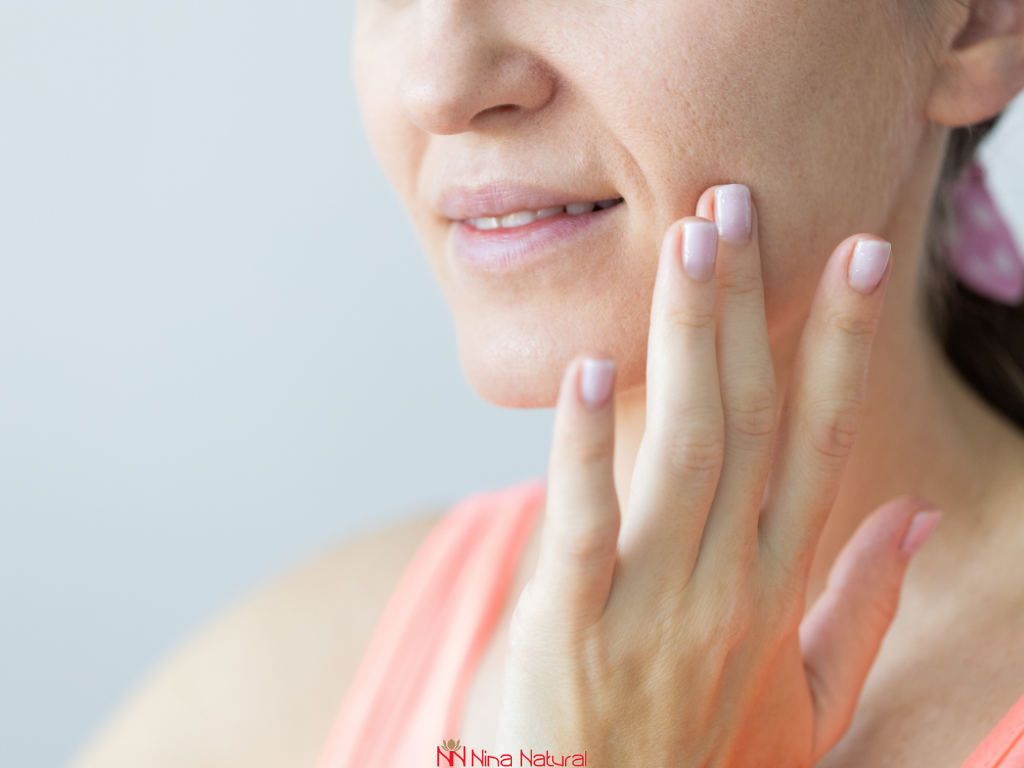
The Connection Between Sebaceous Gland Imbalance and Hormonal Imbalance
Many women wonder why their skin suddenly changed – from oily and acne-prone in puberty, to dry and sensitive in menopause. The truth is that sebaceous glands don’t work in isolation: their activity is closely connected to hormones. When hormones fluctuate, the skin almost always shows it first. Sometimes it’s increased oiliness, shine and acne, and sometimes dryness, flaking and a feeling of tightness. Understanding this connection helps to look at symptoms more broadly, not just as a skin problem, but as a signal of internal balance.
Androgen Hormones – Testosterone and DHEA
Androgen hormones are present in both women and men, but in women, elevated levels of testosterone or DHEA can significantly affect the skin. They stimulate sebaceous glands to produce more sebum, leading to oily skin, shine and acne. That’s why during adolescence, when androgens are particularly active, pimples and blackheads often appear.
Menstrual Cycle and Hormonal Fluctuations
In women, skin is particularly sensitive to monthly hormone changes. In the period before menstruation, due to the drop in estrogen and changes in progesterone, skin can become oilier and acne more pronounced. Although this is a completely normal body reaction, it can be frustrating when it repeats every month. The good news is that with a proper care routine and careful selection of products, symptoms can be alleviated.
This is precisely where Immortelle based facial care products can help. Thanks to its anti-inflammatory and regenerative effects, immortelle soothes redness, reduces inflammatory processes and helps skin recover faster from pimples. Its ability to balance sebum secretion and protect skin with antioxidants makes it a valuable ally on days when hormonal changes most affect the appearance and feeling of skin.
Helichrysum Facial Cleansing Tonic
Contains Helichrysum hydrolat, rose water, and panthenol Alcohol and preservative-free formulation Gently cleanses, refreshes, and revitalizes the skin Boosts microcirculation and deeply hydrates the facial skin Soothes and rejuvenates the skin Removes makeup residues and limescale that accumulates in pores due to hard water Tightens pores and prepares the skin for further care Convenient spray bottle for easy application Handcrafted in small batches
Pregnancy and Menopause
Hormonal changes during pregnancy and menopause can completely change skin needs. Some women then feel like their face is constantly oily, while others notice increased dryness and sensitivity. This “hormonal rotation” means that skin at different life stages requires different care – what helped before may no longer be enough or may not even be suitable.
Cortisol and Stress
Stress isn’t just a psychological burden – it’s also visible on the skin. When we’re under chronic stress, cortisol levels rise. Cortisol directly stimulates sebaceous glands, so skin becomes oily, more prone to acne and inflammation. In addition, stress disrupts the overall hormone balance, so its management (relaxation, quality sleep, physical activity) becomes an important part of skin care, equally as important as cosmetics themselves.
Metabolic Disorders
Conditions like insulin resistance or PCOS (polycystic ovary syndrome) often reflect on the skin. Oily skin, acne, and even seborrheic dermatitis can be the first signs that the body needs deeper attention. Skin is, in a way, a mirror of internal health, so it’s important to view symptoms not only externally, but also through the lens of overall hormonal balance.
So, the conclusion is that we need to react when skin “suddenly” becomes oily, dry or acne-prone. Often the problem isn’t just in cream or shampoo, but in hormones. Understanding this connection helps a woman have more patience with her skin and know that a solution is possible, but it must come from both outside and inside.
Possible Causes of Sebaceous Gland Imbalance
The work of sebaceous glands is not only influenced by genetics and hormones, but also by lifestyle. Stress, poor sleep and imbalance in daily habits are often the main triggers that additionally disturb skin condition. When we understand these factors, it’s easier to find a way to alleviate symptoms.
Stress: A Trigger for Hormonal Imbalance
Stress isn’t just a mental burden. It literally changes the way skin functions. When we’re under pressure, the hypothalamic-pituitary-adrenal (HPA) axis is activated and the secretion of stress hormones, such as cortisol and adrenaline, increases. This has several consequences:
Hormonal imbalance: elevated cortisol disrupts the balance of sex hormones, especially androgens, leading to increased skin oiliness, acne and seborrheic dermatitis.
Inflammatory response: stress encourages the production of inflammatory molecules (cytokines), making pimples redder and more painful.
Neurological influence: stress increases the secretion of substance P, which directly stimulates sebaceous glands to work faster.
That’s why many women notice their face gets worse precisely in periods of increased stress. The skin literally “reflects” the state of the nervous system. But stress isn’t only visible on the face. You’ll also feel different, you’ll sweat more, get tired faster and won’t have the will to take care of a completely new daily skin routine. Yes, quite a lot of women go through such periods, and they are indeed one of the symptoms.
Simple techniques like yoga, meditation or deep breathing can directly reduce your tension. Although these changes seem small, they can be a big change for your organism.
Sleep: Regeneration and Hormonal Reset
While we sleep, the body goes through a process of regeneration and hormonal balance. During deep sleep, melatonin is secreted, a hormone that also acts as a powerful antioxidant and skin protector. It helps restore the skin barrier, reduce oxidative stress and regulate the work of sebaceous glands.
When there isn’t enough sleep, the opposite effect occurs: cortisol levels rise, insulin resistance appears and the balance of hunger hormones (leptin and ghrelin) is disrupted. The result is tired, dehydrated skin, more frequent inflammation and more pronounced symptoms like acne and flaking.
Stress and lack of sleep aren’t “just” a psychological problem, but serious risk factors for the appearance of acne, oily or dry skin and seborrheic dermatitis. That’s why skin care doesn’t start only in the bathroom, but also in the way we rest, eat and deal with stress.
Sleep is the most natural “reset” for skin and hormones. During deep sleep, melatonin is secreted, a powerful antioxidant that renews skin cells, reduces oxidative stress and helps regulate hormones like insulin and cortisol. If you sleep 7-9 hours a night in a regular rhythm, there’s a greater chance that your sebaceous glands will work more stably, without sudden “explosions” of sebum or dryness.

How Should Basic Care Look If There’s a Sebaceous Gland Imbalance?
Sebaceous gland imbalance often has its root in hormones, so cosmetics alone cannot completely solve the problem. However, a basic care routine is your first line of support. It helps skin stay stable, reduces irritation and gives a feeling of comfort while working on deeper causes like hormones, nutrition or lifestyle.
Skin Cleansing: Gentle but Consistent
Washing is important, but more washing doesn’t mean skin will be better. Too frequent washing or aggressive soaps strip away the protective barrier and send a signal to your sebaceous glands that they must work even faster. The result is even oilier skin.
Wash twice a day (morning and evening) with mild gels or foams. Focus on the T-zone (forehead, nose, chin), but always massage gently, without rough rubbing. This way you remove excess sebum and impurities, without disrupting natural balance.
Hydration: Even Oily Skin Desperately Needs It
One of the biggest misconceptions is that oily skin “doesn’t need cream.” The truth is opposite: lack of moisture forces sebaceous glands to produce even more sebum, so the problem becomes bigger. Choose light, non-comedogenic creams or gels that won’t clog pores. Ingredients like hyaluronic acid are excellent because they provide deep hydration without oily shine. Hydrated skin is more resistant, less prone to irritation and recovers faster.
Don’t forget that your skin usually doesn’t need 56 products, but rather the ones suited for your skin type. Dermatologists are often the ones who bring us back to skinimalism – we easily get lost and buy everything we see.
Nutrition as the Foundation of Balance
Food can be fuel for inflammation or a skin ally. Focus on vegetables, whole grains, nuts and omega-3 fatty acids, as they help regulate hormones and calm inflammation. On the other hand, sugars, refined carbohydrates and dairy products often raise androgen levels and can cause acne worsening.
Avoiding Harmful Factors
Some habits additionally disrupt balance:
- Alcohol and cigarettes increase oxidative stress and accelerate skin aging.
- Touching the face or squeezing pimples can worsen inflammation and leave scars.
Although they sound like small things, these habits make a big difference in the long run.
Complications Arising from Sebaceous Gland Imbalance
When sebaceous gland imbalance is ignored for a long time, it can have serious consequences. This doesn’t mean that changes that occur after ignoring symptoms are irreparable, but that it’s important to react in time.
Scars and Traces from Acne
When acne occurs frequently and remains untreated, skin goes through repeated inflammatory processes. Each inflammation slightly damages deeper skin layers, and collagen that gives it firmness breaks down. The consequence is small scars and darker spots that remain after the pimple disappears. These changes don’t happen immediately, but over time, which is why early intervention is important.
Secondary Infections and Irritations
Sebum itself isn’t bad because it protects the skin. But when there’s too much of it, it becomes a substrate on which bacteria and fungi that naturally live on the skin easily multiply. If ideal conditions for their growth are created in clogged pores, inflammation becomes more frequent and longer-lasting. This is how stronger acne or seborrheic dermatitis develops. Understanding that this is a natural process, not “dirty skin,” helps the problem be viewed with less stigma and more attention.
Chronic Sensitivity and Redness
When skin is exposed to irritation and inflammation for a long time, its protective layer becomes thinner and more sensitive. This means it easily reacts to wind, sun, temperature changes or even the slightest irritants. Skin becomes prone to flaking and redness that is difficult to calm. If this condition is not monitored, it turns into chronic sensitivity that affects daily comfort.
Hormonal Consequences
Sebaceous glands are “hormone messengers.” When they work accelerated for a long time, this can be a sign that androgen hormones (like testosterone) are imbalanced. This doesn’t necessarily mean a serious disease, but may indicate a condition that requires broader attention – like PCOS, insulin resistance or imbalance in the menstrual cycle. Viewing skin as a “mirror” of internal health helps symptoms be taken seriously, but without panic.
Psychological and Social Aspect
The most often neglected complication is emotional. Long-term skin problems affect self-confidence and the way a person experiences themselves. This can cause withdrawal from social situations or a feeling that “nothing helps.” In reality, skin has enormous regenerative ability, but it needs time and attention. When the problem is discussed openly and without stigma, the feeling of isolation is also reduced.
Complications of sebaceous gland imbalance are not inevitable, but can become more pronounced if the problem is ignored for a long time. Understanding what happens to our skin gives motivation to react in time, through patient care, monitoring our own body and, when necessary, professional advice.
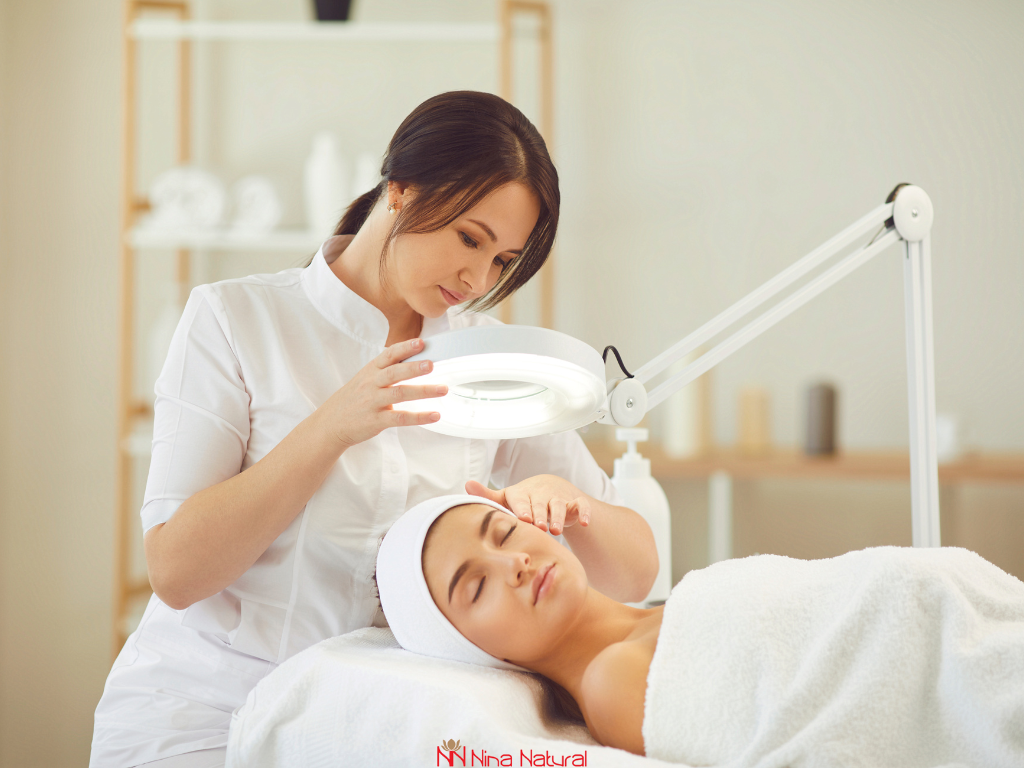
When to Seek Medical Advice?
Mild symptoms like occasional flaking, oilier shine or redness are usually not a cause for concern and can be alleviated with home care and an adapted routine. However, there are situations when it’s important to involve a dermatologist, because the skin is sending signals that it needs professional support.
Early Symptoms to Pay Attention To
- Redness that repeats and doesn’t calm down even when using mild facial products.
- Skin itching or stinging that becomes daily and disturbs comfort.
- Oily scales or dandruff that spread from the scalp to eyebrows, nose or chin.
- Small pimples or inflamed changes on the face that last for weeks and don’t withdraw.
- Sudden worsening of skin condition – if you notice the problem spreading, becoming painful or causing wounds and crusts.
These are the first signals that skin can no longer cope alone and that it’s time to seek professional opinion.
How Can a Dermatologist Help?
A specialist can offer targeted treatments that are more effective than ordinary cosmetics:
- Medical shampoos and creams with active ingredients (like ketoconazole, zinc pyrithione or mild corticosteroids).
- Chemical peels that remove excess sebum and renew the skin surface.
- Laser therapy and light treatments for reducing redness and regulating sebaceous glands.
- Medications – in more severe cases, a dermatologist may recommend systemic medications that work on inflammation or sebum secretion.
You shouldn’t wait for the problem to become serious to seek help. If you notice that skin is sending signals you can’t calm yourself, a conversation with a dermatologist can prevent complications and significantly speed up recovery.
It’s important to know – the need for a doctor isn’t a sign that you “delayed,” but that you decided to care for your health in the right way.
Myths and Misconceptions About Sebaceous Gland Imbalance
When it comes to skin, advice that does more harm than good often circulates on forums and social media. Here are some of the most common misconceptions and what actually applies:
Myth: Oily Skin Doesn’t Require Hydration
Truth: Even oily skin can be dehydrated. When it lacks moisture, sebaceous glands try to “compensate” by secreting even more sebum. This leads to a vicious cycle, because the more we dry it out, the oilier the skin becomes. Proper hydration with light, non-comedogenic products actually helps skin find balance.
Myth: The More You Clean the Skin, the Healthier It Will Be
Truth: Excessive and aggressive cleansing strips away the skin’s natural protective barrier. In response, sebaceous glands work accelerated and secrete even more sebum. The result is additional oiliness, irritation and redness. Gentle cleansing twice a day is enough for skin. More than that usually does damage.
Myth: Sebaceous Gland Imbalance Occurs Due to Poor Hygiene
Truth: The work of sebaceous glands is most influenced by hormones, genetics, stress and lifestyle habits. Hygiene is important, but it alone doesn’t solve the cause. Therefore, it’s not true that acne or seborrhea are “consequences of uncleanliness.” This is a stigmatizing, wrong idea that still circulates on forums.
Myth: Oily Skin Means It’s Unhealthy
Truth: Sebum is the skin’s natural protection. It protects it from moisture loss and external irritations. Only when there’s too much or too little of it do problems like shine, enlarged pores, pimples or flaking appear. Oily skin doesn’t necessarily mean unhealthy skin, just different needs.
Myth: If You “Squeeze” Blackheads and Pimples, Skin Will Clear Faster
Truth: Squeezing damages tissue and spreads inflammation, so acne stays longer, and scars often form. Dermatologists emphasize that this is one of the most dangerous habits people still follow because they “picked it up” from forums or social media.
Myth: Natural Oils Are Always Good for Skin
Truth: Not every oil is suitable for oily or problematic skin. Coconut or olive oil for the face is often advised on forums, but they are highly comedogenic and can worsen pore clogging. Natural doesn’t automatically mean safe.
Myth: Oily Skin Will Go Away by Itself After Puberty
Truth: Although hormonal imbalance in puberty often causes acne and increased sebum, in many people oily skin and gland problems continue into adulthood. If not properly cared for, the condition can become chronic.
Myth: Only the Face Suffers from Sebaceous Gland Imbalance
Truth: Seborrhea and acne don’t only appear on the face – they’re also common on the scalp, back and chest. Therefore, treatment shouldn’t be directed only at the face, but at the whole body if symptoms exist.
Conclusion
Sebaceous gland imbalance isn’t something that’s solved overnight, nor is it always a sign of a serious problem. It’s primarily a body signal that it needs attention: whether through basic care, lifestyle changes or with dermatologist support. It’s important to know that oily or dry skin aren’t reflections of personal error, but part of natural balance that can be disturbed for various reasons.
The good news is that with patience and consistency, skin condition can be significantly improved. Small changes like regular sleep, stress reduction, gentle care and proper hydration often bring visible results. If the problem persists, doctors are there to provide additional support.
Most importantly, we shouldn’t ignore the signals that skin sends. When we listen to it and provide what it needs, it rewards us – with a healthy appearance and a feeling of ease in our own skin.

